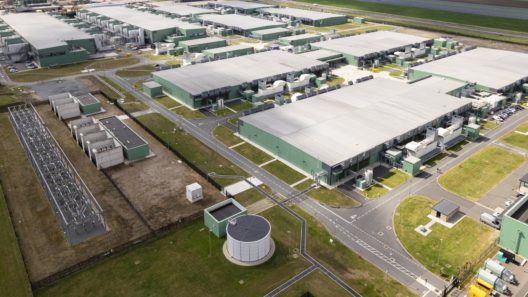Approaches to public compute
Mapping global approaches

Project background
Although compute or computational power is used for many applications, it has become most prominent in recent years as a crucial part of the AI supply chain – as the processing power required to train and run AI models.
Definitions
Drawing on West and Vipra’s work in this area, we define compute systems as comprising a stack of hardware, software and infrastructure components:
- Hardware: chips such as Graphics Processing Units (GPUs), originally used to render graphics in video games but now increasingly applied in AI due to their ability to support complex mathematical computations.
- Software: to manage data and enable the use of chips, and specialised programming languages for optimising chip usage.
- Infrastructure: other physical components of data centres such as cabling, servers and cooling equipment.
Public compute refers to the public provision of compute, either by public entities or by private entities receiving public funding or investment.
State provision of computing resource is a well-established area of public policy, with uses including weather forecasting, climate research and renewable energy. Many of the first ‘supercomputers’ were procured or built by public organisations, and today supercomputers operated by entities associated with the United States government and the European Union are among the fastest in the world.
The emergence of AI as an industrial priority for countries and trading blocs across the world has begun to change this landscape, with the availability of compute for AI projects becoming an important marker of the global AI ‘arms race’. This can been seen through the establishment of new AI-focused compute initiatives, and new priorities for established public compute projects.
In the UK, the government’s investment in a new UK AI Research Resource (AIRR) aims to provide access to world-class compute for UK-based researchers. Other countries such as France and India are also investing significant sums in public compute, while the National AI Research Resource (NAIRR) is a long-term bipartisan policy goal in the USA.
Proponents argue that these investments could help to bridge the ‘compute divide’ which has led to the domination of the AI market by a small number of private-sector companies. However, it is crucial that these policies are designed in a way that delivers value for people and society. In a blog post, researchers from Ada and Common Wealth set out a number of challenges that need to be addressed by policymakers seeking to achieve this.
Project overview
Ada is working in partnership with the Mozilla Foundation to map existing and planned strategies for public compute and better understand the options available to policymakers.
Our initial mapping has found a landscape characterised by pluralism and experimentalism: global policymakers are not yet converging towards a single approach or set of best practices for public compute.
Despite this, some common themes have emerged:
- Varied aims: The aims of public compute strategies are diverse, ranging from economic competitiveness to support for public interest innovation, and can sometimes be in tension.
- Shaping factors: Public compute strategies are shaped by existing industrial strengths and weaknesses, national policymaking traditions and international factors such as export controls.
- Coordination challenges: In many jurisdictions, multiple overlapping public compute initiatives exist, contributing to a crowded institutional landscape and presenting coordination challenges.
- Conditions of uncertainty: Public compute strategies are often flexible in response to uncertainty surrounding AI’s future capabilities and market structure, making long-term planning difficult.
- Public value and conditionality: The high cost of compute investments creates questions about how to balance equitable and open access for research with returns to the public purse.
The next phase of our research will delve into these themes in more detail as we work to develop policy options and considerations for policymakers developing public compute strategies.
If you’d like to speak to us about this work, please contact project lead Matt Davies.
Project publications

Mapping global approaches to public compute
Understanding the options available to policymakers